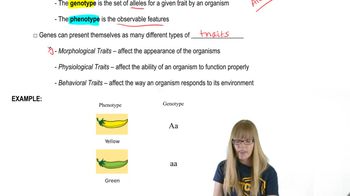Here are the essential concepts you must grasp in order to answer the question correctly.
Molecular or Genetic Disease
A molecular or genetic disease is caused by abnormalities in the genetic material, such as mutations in DNA that lead to dysfunctional proteins. Sickle-cell anemia, for instance, results from a single nucleotide mutation in the hemoglobin gene, causing red blood cells to assume a sickle shape. This structural change impairs oxygen transport and leads to various health complications, illustrating how genetic alterations can directly affect physiological functions.
Recommended video:
Pathogen-Induced Disease
Pathogen-induced diseases are caused by invading microorganisms, such as bacteria, viruses, or fungi, which disrupt normal bodily functions. Unlike genetic diseases, these conditions arise from external agents that can reproduce and spread within the host. For example, an infection like influenza is caused by a virus that hijacks host cells to replicate, leading to symptoms and illness, highlighting the difference in origin compared to genetic disorders.
Recommended video:
Comparative Analysis of Disease Types
When comparing molecular diseases like sickle-cell anemia to pathogen-induced diseases, key differences emerge in their causes and treatments. Genetic diseases are often inherited and may require gene therapy or management of symptoms, while infectious diseases can be treated with antibiotics or antivirals. However, both types can lead to significant health issues and may share common symptoms, such as pain or fatigue, complicating diagnosis and treatment strategies.
Recommended video:




